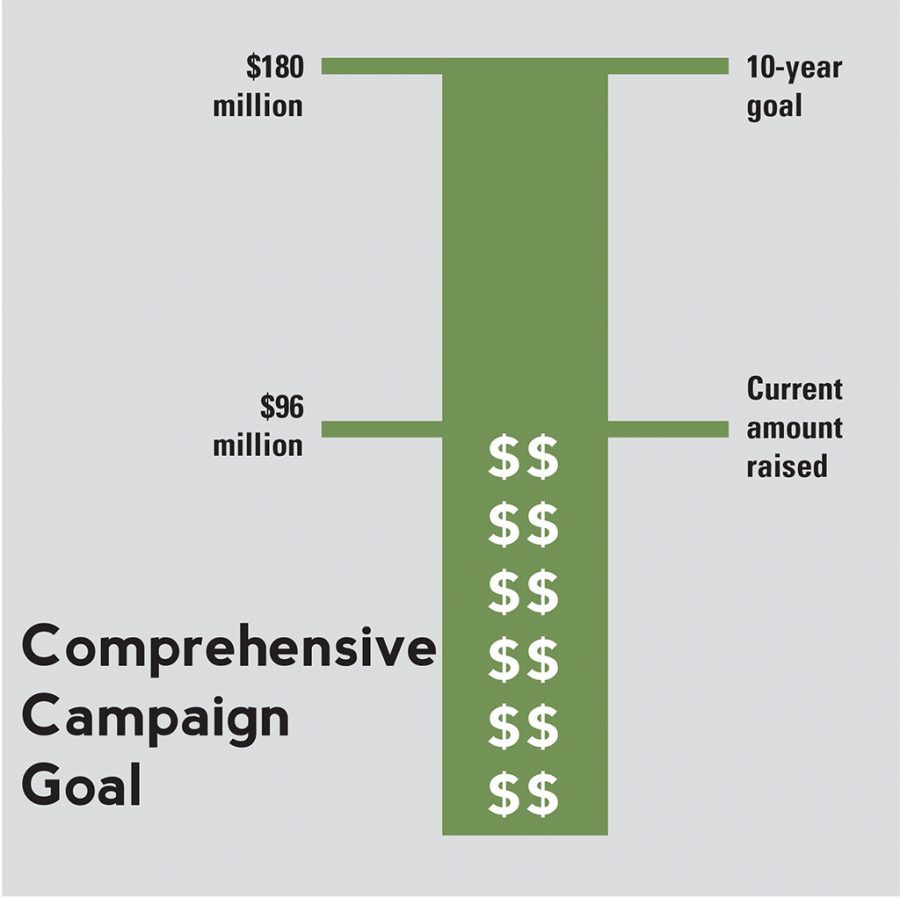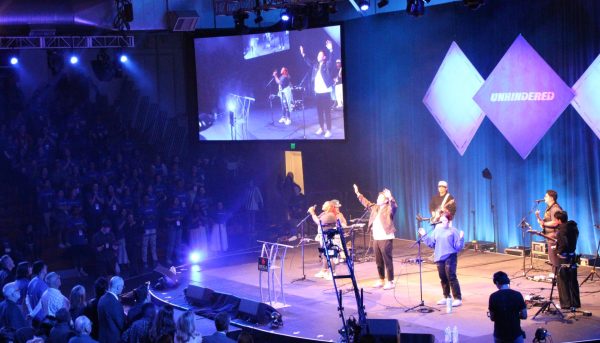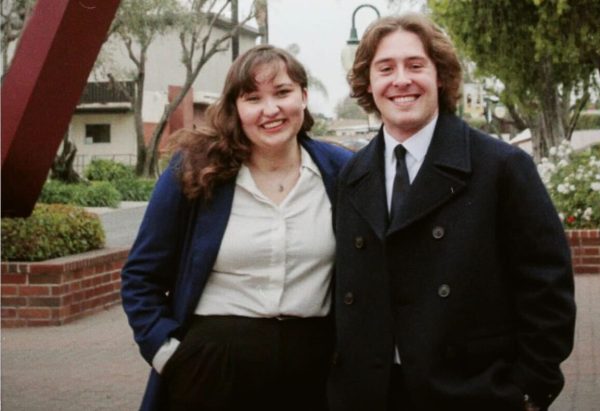Fundraising campaign halfway to goal
A campaign to fund a new science building is almost halfway to reaching its 10-year goal to raise $180 million.
October 2, 2013
Biola’s comprehensive campaign is over halfway to reaching its 10-year goal of raising $180 million, which is set to fund several causes, including student aid and new facilities.
“It’s way bigger than anything Biola’s ever done before,” senior director of development Mark Miles said.
The board of trustees approved the campaign in Jan. 2012. Since then, $96 million has been donated to the university. This is a typical percentage, given their current phase in the campaign.
“The focus is on working with major donors and foundations and trying to line up larger gifts for the campaign prior to a public announcement,” Miles said.
The capital campaign is an outgrowth of the plan for Biola, according to Miles.
The university plan lays out seven aspirations that the university seeks to incorporate into its vision through the year 2022. The campaign funding has an eye especially on the seventh aspiration — ensuring the affordability of a Biola education, according to Miles.
Largest block of money set aside for scholarships
“The largest single piece of the campaign is $85 million that is associated with providing scholarship funding for students,” Miles said.
Scholarships help many pay for college while avoiding student loan debt, which has been increasing across the United States in recent years. For the first time ever, the amount of outstanding federal student loans exceeded $1 trillion as of June 30 this year, according to the office of Federal Student Aid.
Of the $85 million in scholarship funding, $20 million is allotted for the Biola Fund, which provides unrestricted scholarships. An unrestricted scholarship has no particular designation assigned by the donor. The other $65 million includes restricted scholarships and endowment-based scholarship funds. Restricted scholarships are funded by donors who wish to tie their money to a specified group of designees, such as a certain academic major. Endowment-based scholarships come from Biola’s $93 million endowment, which houses the university’s investments. Biola draws out 4.5 percent every year to fund scholarships, among other items.
“The endowment is powerful because it provides scholarship funding this year, and next year, and the next year, and the next year and so on,” Miles said.
Campaign funds new science building
Another large amount of comprehensive campaign dollars is expected to fund the new science building, which will replace the current 54-year-old Bardwell Hall. No date has been set for construction or completion of the building since they have not yet raised adequate funds for the building. It would take two years to complete the design phase and two years for the construction phase, according to Miles.
“The very soonest, if we had all the money in the door today, would be in excess of four years before that building would be ready,” Miles said.
The science building is expected to be four stories, encompassing about 90,000 square feet. The university has estimated it will cost $63 million, making it the most expensive building ever constructed at Biola, according to dean of science and health Walt Stangl. It will be located on the McNally campus, across the street from the prayer chapel, where the art department currently sits.
“It includes the biological sciences department: chemistry, physics, engineering and nursing,” Stangl said.
New faculty offices, classrooms and space for faculty research are also anticipated, another significant plus for Biola, according to Stangl.
“One of the deficiencies of Bardwell [Hall] is there is very little research space … It’s an old building; it’s been around a long time,” Stangl said.
The university has recently been in discussion with several major donors regarding this campaign, according to Miles.
“The Lord needs to work in their hearts,” he said.







